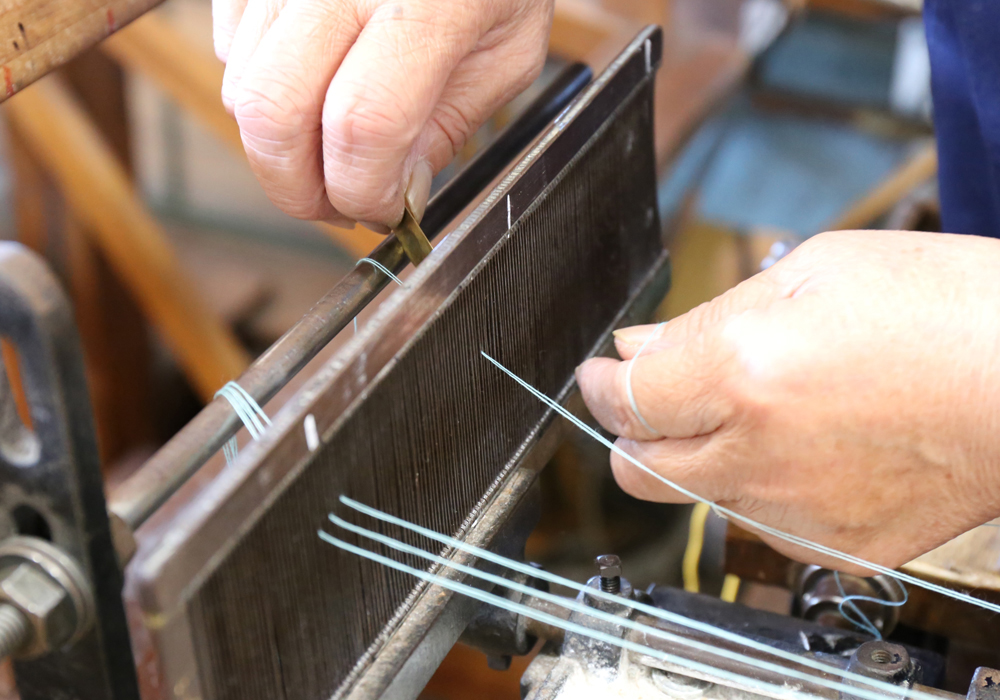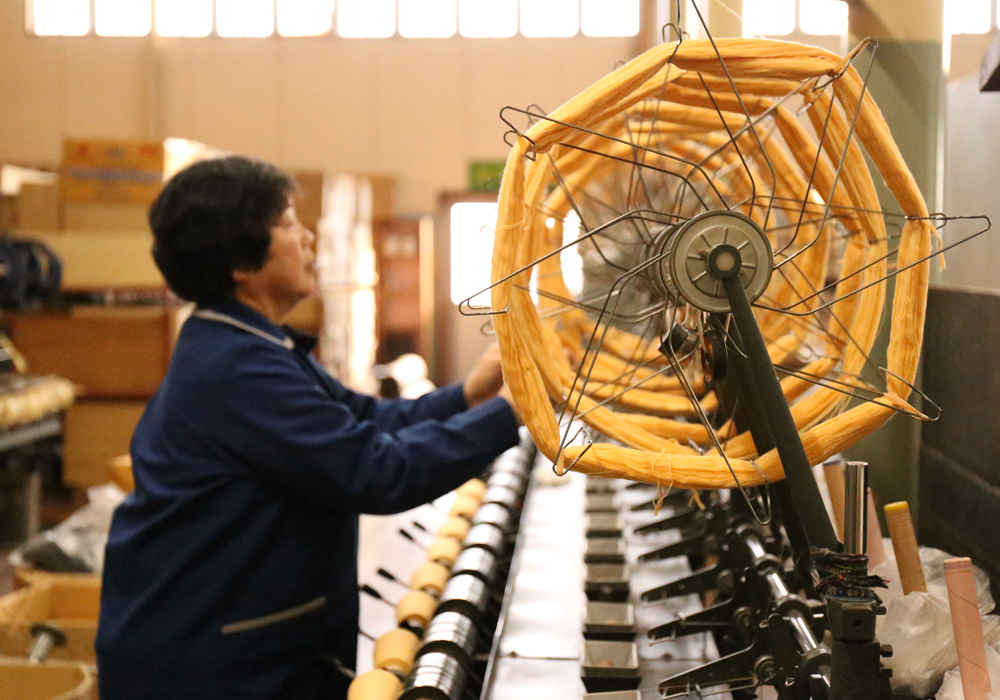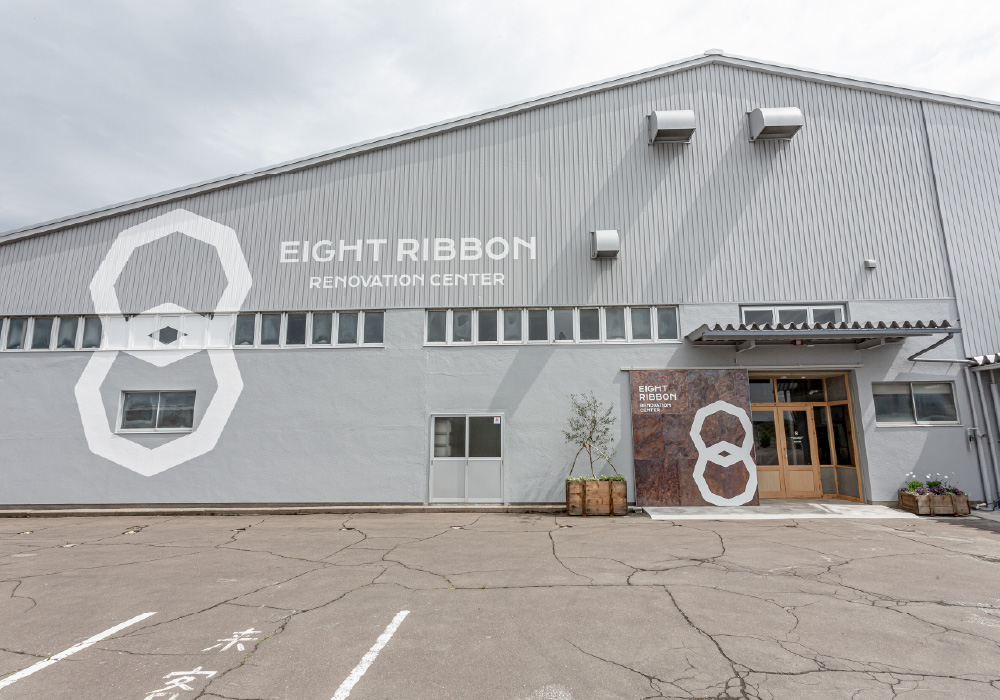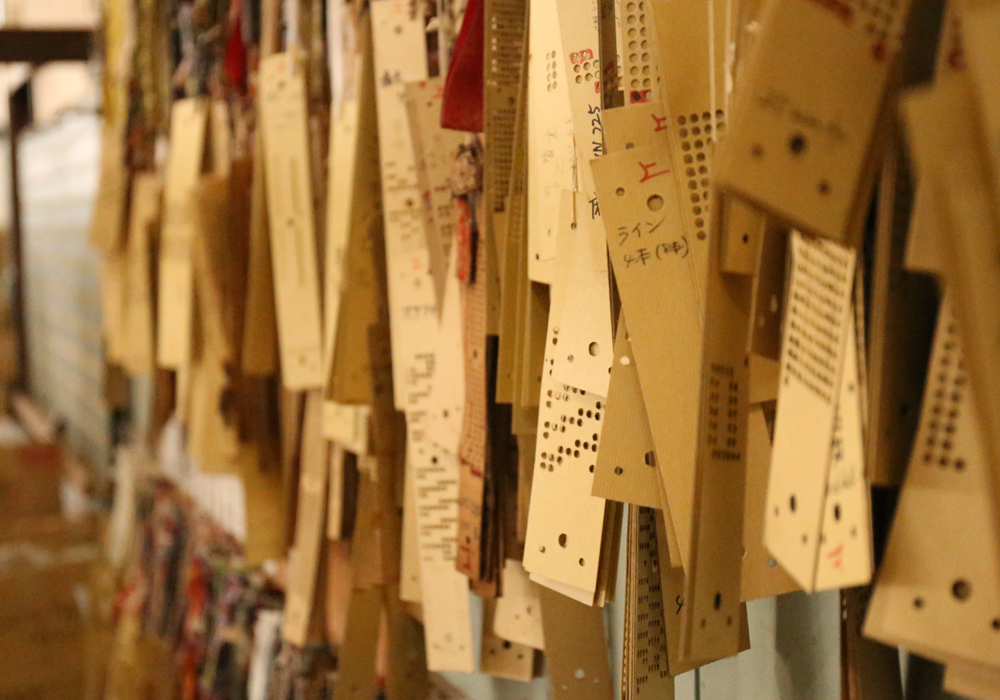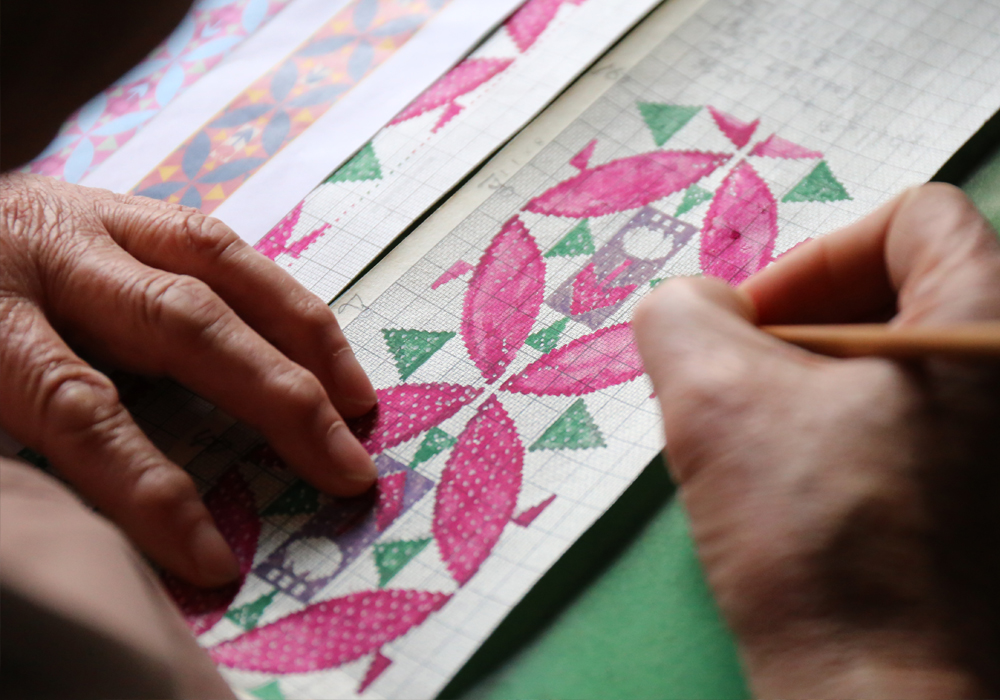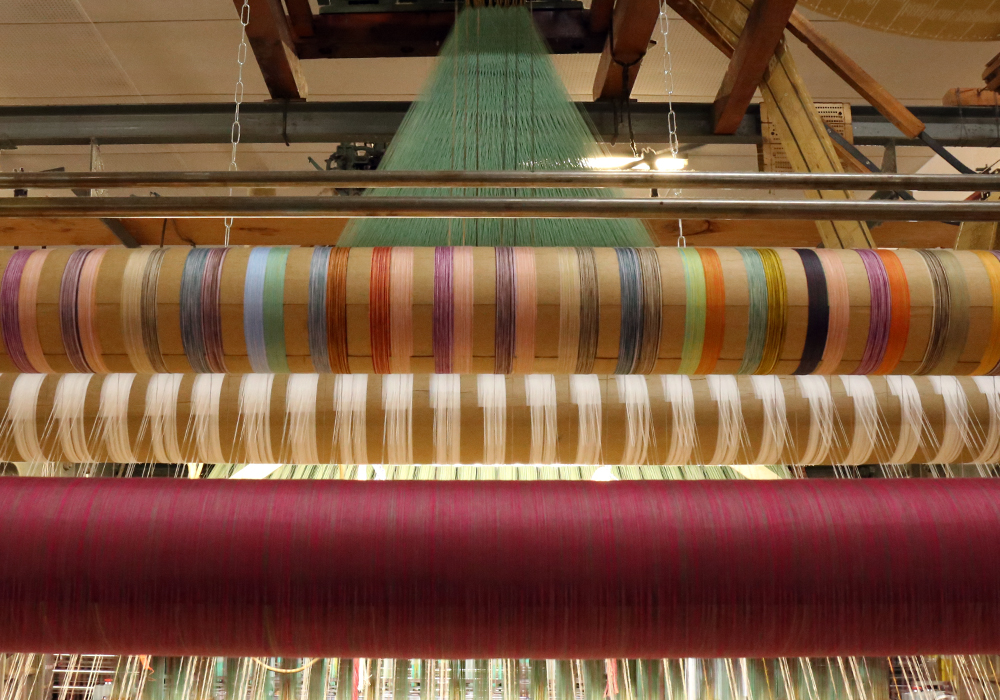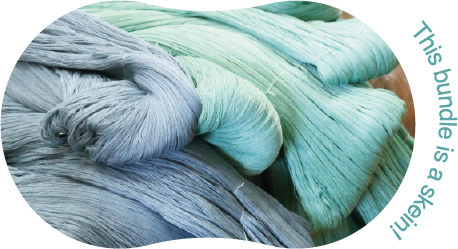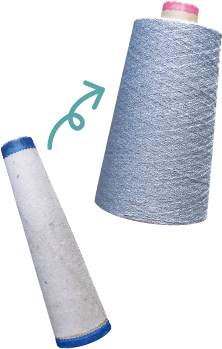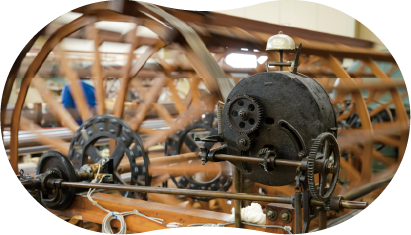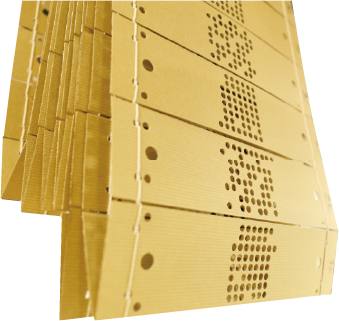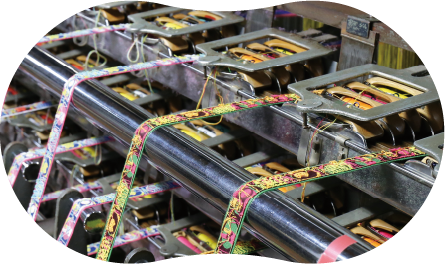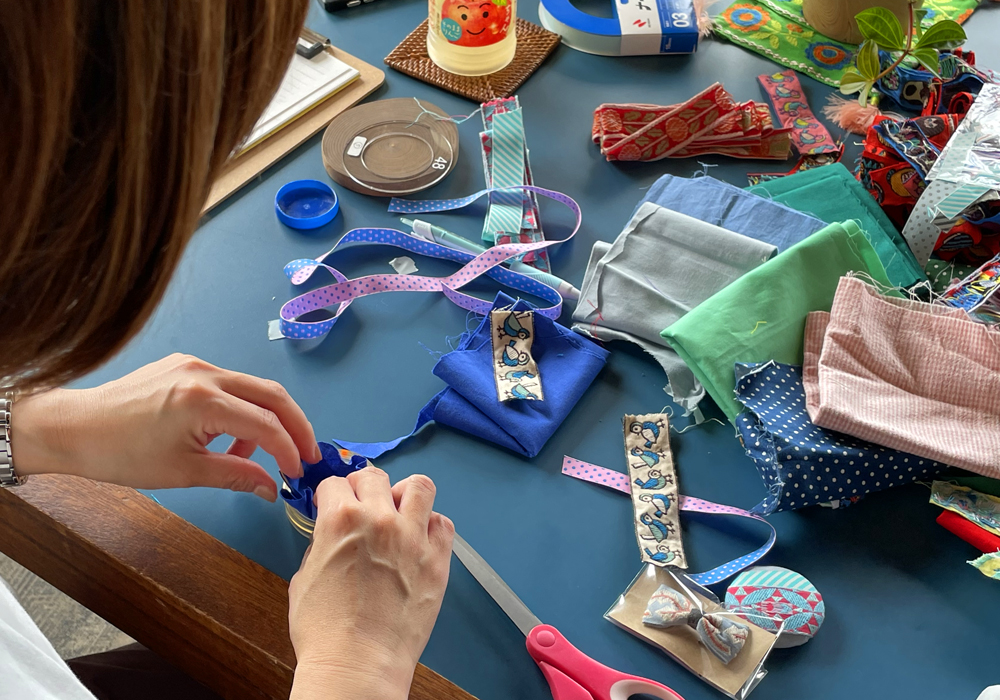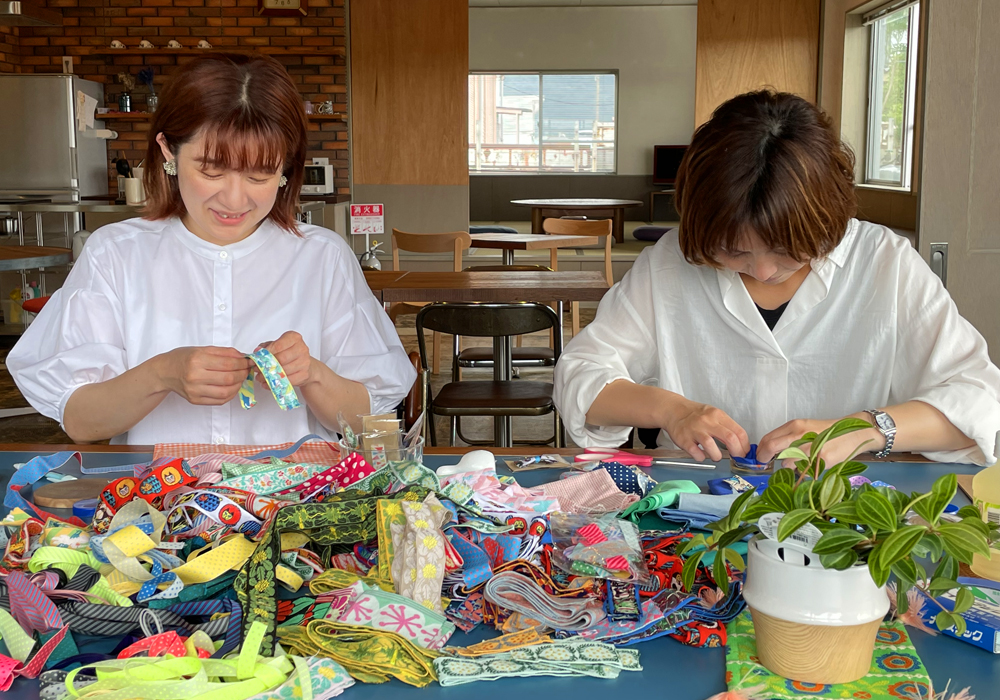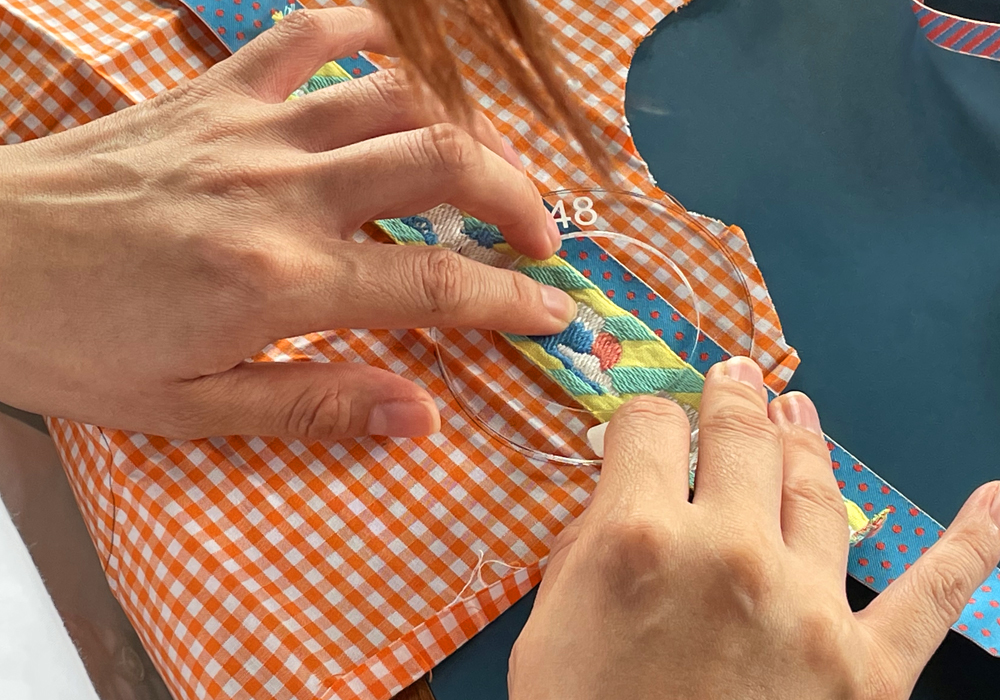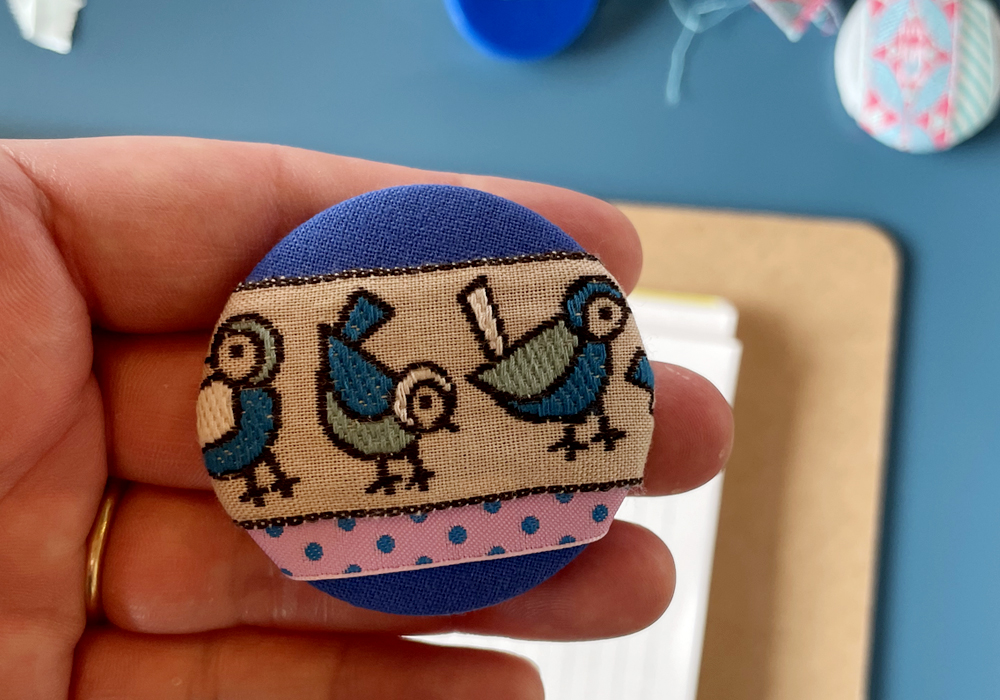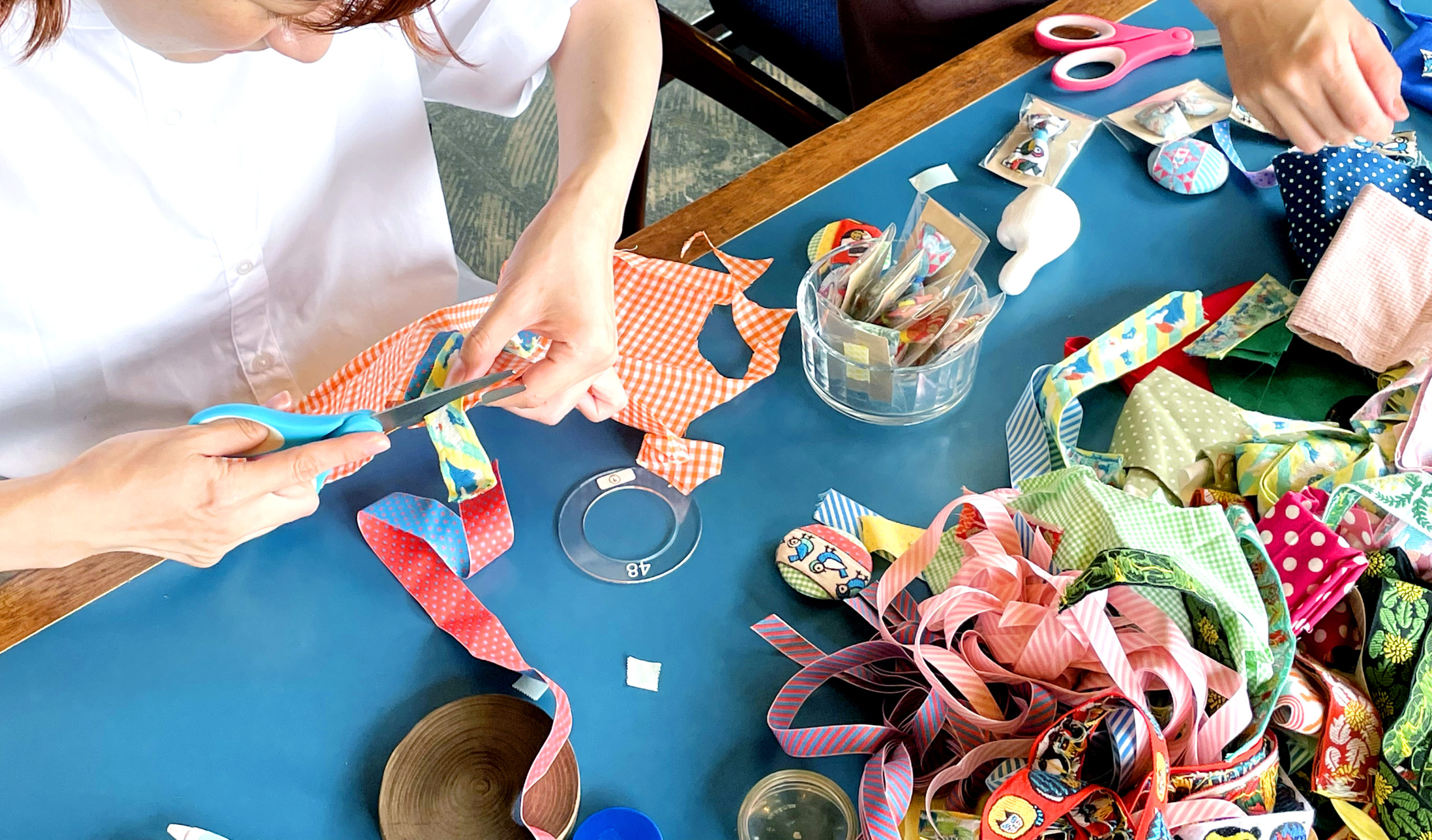
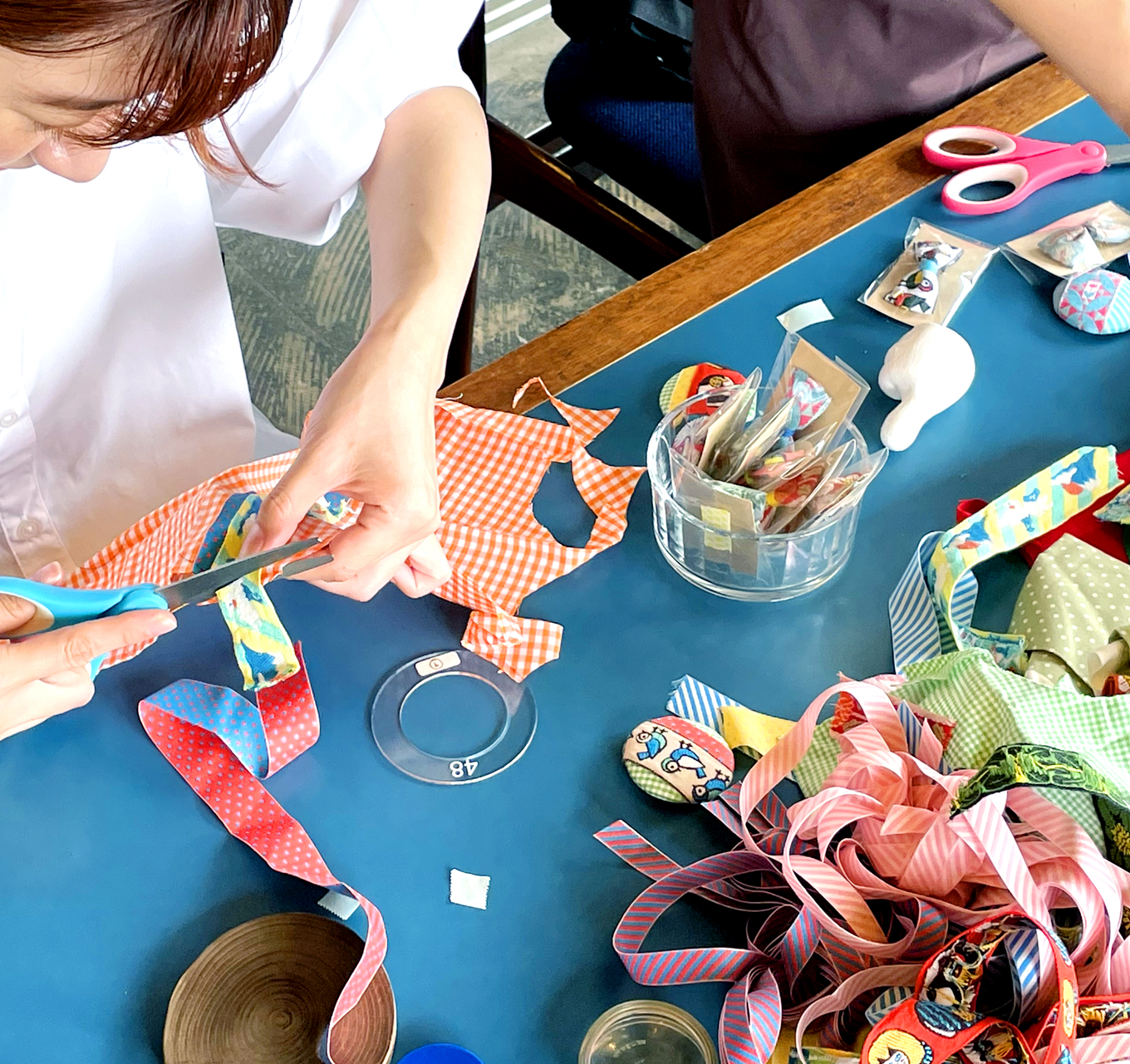
EIGHT RIBBON
We, Eight Ribbon, are a Tirolean ribbon factory using the largest shuttle looms (old type) in Japan.
*Tirolean ribbon = Jacquard ribbon.
The "Maruoka Eight Ribbon Cooperative Association," which was the predecessor of Eight Ribbon, was established on April 1, 1961
by eight ribbon factories and was the largest Jacquard ribbon factory in Japan,
but ended its 54-year history in 2015.
We are in the midst of reviving and restoring the Eight Ribbon.
Although the factory was forced to close down at one time,
the traditional ribbon weaving techniques that remain here are fascinating and cannot be seen anywhere else in the world.
It is perhaps the one and only ribbon factory where you can see up close the moment the thread is transformed into Tirolean ribbon.
Why don't you come visit the retro, cool, and cute Tirolean ribbon factory, which continues to evolve through repeated revitalizations?
Factory tour
The inside of the factory has a retro, quaint atmosphere, as if we have stepped back in time to the Showa period,
and the workshop space and other areas outside the factory were renovated in 2021,
and are made of scrap wood from the machinery used in our ribbon factory, a space that stimulates the spirit of manufacturing.
We will sell "Rapyarn ribbon,"
a factory brand of original Tirolean ribbon,
which was launched when we took over the management of Eight Ribbon, and we will also show you the entire production process of Rapyarn ribbon.
You can actually operate the looms and handle the retro machines that have been in use for more than 60 years,
an experience you cannot have at any other factory.
During the actual factory tour, our staff will carefully explain the process of Tirolean ribbon production
| Number of visitors | 2 to 36 *If there are more than 10 people, we will accommodate them on an individual basis. |
|---|---|
| Time required | Tour only 45 to 60 minutes / Tour + Workshop 75 to 90 minutes |
| Workshop | Anyone can make a cute ribbon badge using ribbon scraps. (Can also be changed to hair bands)
|
*Not included in the tour price
Audio narration and brochures in English and Traditional Chinese are available for the factory tour.
We will use a translation application to communicate with the tour staff.
How to make Jacquard ribbons
-
Yarn
Yarn can be broadly divided into long fibers (e.g., silk) and short fibers (e.g., cotton). Eight Ribbon handles both types of yarn and always has skeins of them on hand. The warp of a textile is written as "tateito" in kanji characters, and the weft is written as "yokoito". It is the same as "longitude and latitude" used in maps!
-
Dyeing
The process of adding color to a skein of yarn by soaking it in dye. Many of the yarns handled by Eight Ribbon are dyed at a dyeing shop near the factory. -
Spinning
The dyed yarn comes back from the dyeing shop in a skein. The process of unwinding the skein and rewinding it onto a bobbin is called "itokuri" (spinning). In other textile production areas, it is also called "kasekuri" or "kurikaeshi". It is interesting that textile terminology differs from one region to another!
-
Winding
Winding a string around a cone-shaped paper tube is called a "cone roll". Winding is the name of the process of making these cone rolls. In addition to cone rolls, there are "cheese rolls" that resemble the shape of whole cheese (cylindrical). I don't know why it's always compared to food....
-
Warping
This is the process of preparing thousands of warp yarns so that they can be placed on a loom. The warp threads that have been cone-wound are laid out according to the blueprint and wound on the warping machine. The "taiko," a waterwheel-like structure that spins in a circle, is 4.2 meters in circumference! In the Maruoka production area, it is called a "hammock warping machine".
-
Patterned paper
Patterned paper is a kind of patterned paper needed to weave ribbons. Holes are drilled to indicate the top and bottom of the warp threads, which are then set on the "Jacquard loom". About 100 to 1,000 sheets of patterned papers are needed to weave one ribbon. The Jacquard loom was invented by French inventor Joseph Marie Jacquard in 1806. In Japan, it was introduced to Kyoto (Nishijin) in 1873 (Meiji era) and spread throughout the country.
-
Kudamaki (pirn winding)
The process of winding the weft onto a small bobbin called a "kuda" (tube). When one tube is finished winding, the system automatically replaces the tube, cuts the thread, and winds the thread again on the next tube. The threads that protrude from the tube rolls are called "tails". Funny conversations like, "Did you cut the tail off?", "There's still a tail left," can be heard throughout the factory. -
Warp tying
In this process, the old warp threads on the loom are tied together by hand with the new warp threads that have been newly adjusted. In order to make sure that the connecting threads are not mistaken, a system called "azetake" is used to separate the threads so that the order of the threads can be determined. It is an important process that must never go wrong! By the way, "aze" means "ridge" as in "aze-michi" (ridge between rice fields).
-
Weaving
The warp and weft are hung on a loom, and a "shuttle" with the weft between the warp and the weft moves back and forth to weave the ribbon. The warp threads are manipulated by the patterned paper and Jacquard loom to create the pattern by making different movements each time. The word "shuttle" is used to describe a round trip to the same place, as in "shuttle bus" or "shuttle run".
-
Finishing
This is the process of eliminating weaving defects and measuring lengths. It is also called "hata repair" because it is used to clean up various defects that inevitably occur during the manufacturing process, such as thread breakage, stains, and lifting. Hata = textile. We used to call the room for the finishing process the Dressing Room because it cleans the ribbons.
So why is it possible to create complex patterns on a Jacquard loom?
A Jacquard loom is a machine that weaves fabric using "patterned paper" (= punch cards). Each warp thread can be moved separately according to the instructions on the patterned paper, making it possible to weave complex patterns. Eight Ribbon's Jacquard looms also include an electronic Jacquard loom that does not use patterned paper..
RIBBON’S CAFE
Community space for handicraft lovers
A handicraft space where customers who purchase ribbons can freely use sewing machines on the spot.
Workshops are also available for anyone who wishes to participate.
13-8 Horimizu, Maruokamachi, Sakai City, Fukui Prefecture 910-0271
Tel.090-2123-3366
Open 10:00-17:00, Close: Open year-round (check Instagram)
Website https://ribbonscafe.jp/
Instagram @ribbonscafe



